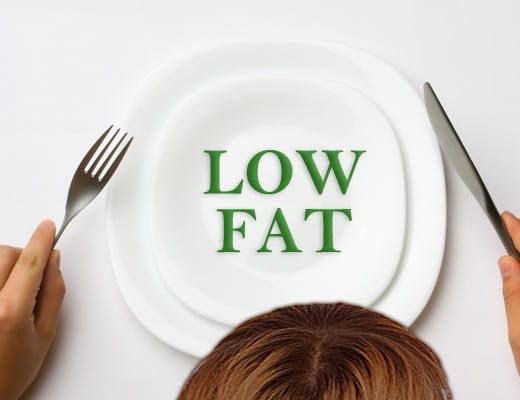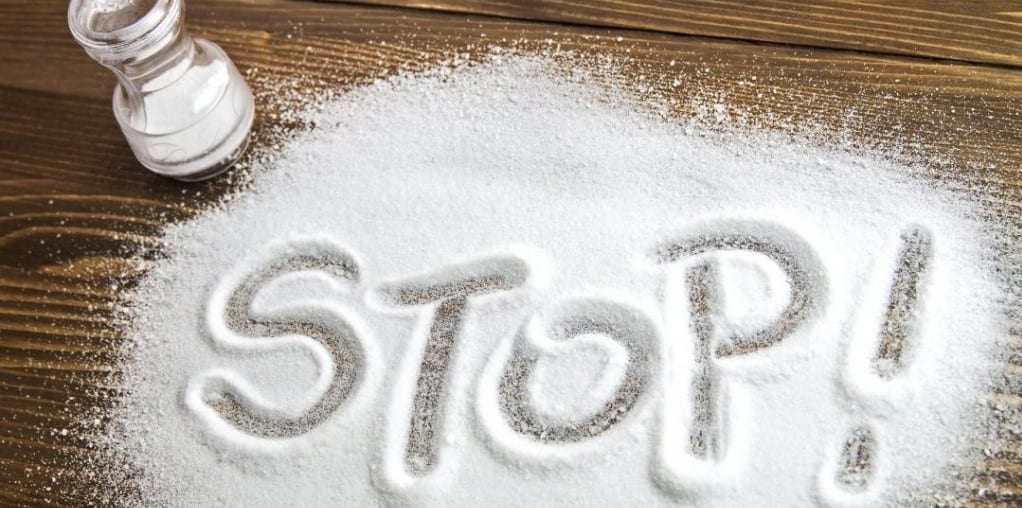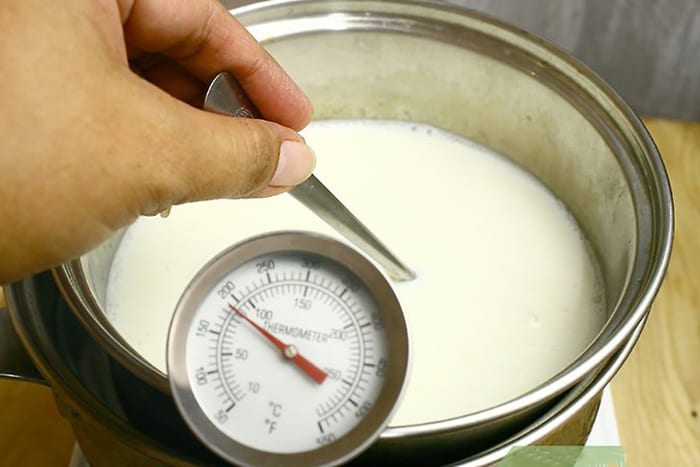Contents
- What should be written on the label
- The mark about the shelf life
- Manufacturing date
- How to read ingredients
- The composition of 100 grams or per serving
- Low fat does not mean healthy
- What means “No cholesterol”
- How to identify fast carbs
- Where to look for excess sugar
- Look for hidden fats in the composition
- How to identify TRANS fats
- Where to pay attention to salt
- What you need to know about food additives
- What does the letter E in the name of food additives mean?
- Pasteurized or sterilized?
- What preservatives are the most common
- Why we need emulsifiers
- More about reading labels on foods watch in the video below:
What should be written on the label
The label should contain not only the name of the product and its manufacturer, but also the amount of proteins, fats, and carbohydrates and calories for 100 g of product.
The product composition looks like a list separated with a comma or a column. Bright inscription “without GMO”, “natural”, “diet”, located on the label have no relation to the composition of the product.
If the product is foreign and the manufacture didn’t make stickers with translation into native language – the product is likely to hit the market illegally, and may be of poor quality.
Buy only products with readable labels, which indicate the nutritional value and composition of the product.
What you need to know about food additivesA variety of nutritional supplements is an integral part of the modern food industry. Not to feel the fear of the unfamiliar words on food labels and to know what you eat, read our materials.
Pay attention to the kind of labels
If the label is worn off, or re-reprinted on top of the old text, this product is better not to buy.
The mark about the shelf life
The shelf life of the product can be labeled in several ways. “Exp” means that certain date and time, the product loses its validity.
If you specified a particular shelf life, the packaging should look for the date and time of production of the product and to calculate, when the shelf life runs out.
Food with unlimited shelf life does not exist. Choose only the products shelf life which is specified explicitly and has not yet expired.
Manufacturing date

The production date can not be marked on the package with a ballpoint pen or marker. They put this data at the edge of the packaging with a special machine or a stamp or printed on the label.
How to read ingredients
The names of the ingredients in the list are in strictly descending order of the amount included in the product. In the first place are the key ingredients. In meat products it can be only meat, in bread – flour, in dairy products – milk.
The composition of 100 grams or per serving
The composition is usually taken to indicate ingredients per 100 g of the product. In the package can be more, and less than this quantity. Therefore, the content of certain ingredients you will have to count on the actual weight of the package.
Sometimes the product indication is based on a portion of the weight is often less than 100 g, and the packaging can be a little. In this case, it is necessary to look closely to see how many servings the package contains, and how to measure.
Always pay attention not only on the product but also on the weight and number of servings in it.
Low fat does not mean healthy
If the product is fat free, it’s not necessarily low-calorie.
Calorie and taste often get at the expense of added sugar. Carefully read the ingredients: if sugar is in the first or second place in the list – this product can not be called useful.
Compare low-fat product “fat” with its neighbor on the shelf. If the differences in the number of calories is insignificant, look for an alternative.

What means “No cholesterol”
This slogan is sometimes placed on products that never contained cholesterol in order to attract additional attention. For example, it is not found in any vegetable oils, as cholesterol – a product exclusively exclusively of animal origin.
Products without cholesterol are not very healthy. For example, there is no cholesterol in spreads made from vegetable oils, many confectionery fats and Margarines are cheap. These products are high calorie and contain TRANS fats.
Treat advertising slogans on packages with a healthy skepticism and pay more attention to composition.
How to identify fast carbs
Not all carbohydrates are sugar. If the product includes a lot of carbohydrates, but sugar in the ingredients list is absent, or it is on the last places – the product contains mostly slow carbohydrates.
However, even in the product declaring “no sugar,” the manufacturer may add extra fast carbs. Sucrose, maltose, corn syrup, molasses, cane sugar, corn sugar, raw sugar, honey, fruit juice concentrate is also a sugar.
Carefully monitor the amount of sugar in any product watching on the calories.
Where to look for excess sugar
Extra fast carbs are in sweets, soda, nectars, juice drinks and energy drinks. A glass of regular sweet sparkling drink can have up to 8 teaspoons of sugars.
Especially carefully study the so-called healthy foods such as muesli, cereal bars, cereal and products for children, manufacturers often add extra sugar.
Try not to buy products with “hidden” sugar – because the calorie content of a diet may finally emerge from under control.
Look carefully at the calorie content of foods that have fats but are not visible. There is a lot of hidden fat in cooked sausages, red fish and red caviar, pies, chocolate and cakes. Fat percentage can be determined by its quantity per 100 grams.
Try to delete from the shopping list the foods with “hidden” fats. They are expensive and too high in calories.
How to identify TRANS fats
TRANS fats – a form of fatty acid molecules, which are formed during the creation of margarine from vegetable oil. Nutritionists recommend limiting their consumption as they, like saturated fatty acids significantly increase the risk of developing cardiovascular diseases.
This is especially important for products that contain vegetable fats that are artificially made solid: Margarines, cooking fats, spreads, cheap candy, chocolate and biscuits.
Refrain from cheap fats and products on their basis – the quantity and quality of real butter and vegetable oil easier to control.
Where to pay attention to salt

Salt in the product may be referred to as “salt” and “sodium”. Look carefully at the amount of salt in the product the closer it is to the top of the list of products, the bigger its share in the food. Safe health dose of salt per day is around 5 g (teaspoon). In terms of sodium -1,5-2,0 g of sodium.
The excess salt is in all foods from processed meats: sausages, smoked, dried and salted meat, canned meat. A lot of salt in hard cheese, salted and smoked fish, preserves, pickled vegetables, potato chips, crackers , fast food and even bread.
Easier to control the amount of salt in the diet, if you cook at home and don’t abuse hard cheeses and smoked meats.
What you need to know about food additives
In our country are used, only those food additives, which the world health organization (who) was allowed to use in Europe a few decades ago.
To buy guaranteed safe products, pay attention to the products of large manufacturers comply with the Standards.
What does the letter E in the name of food additives mean?
The letter E in the designation of food additives means that the substance is approved by a special Commission of the who for use in the food industry in Europe. Rooms 100-180 – dyes, 200-285 – preservatives, 300-321- antioxidants, 400-495 – emulsifiers, thickeners, gelling agents.
Not all “E” have artificial origin. For example, E 440 – good for digestion Apple pectin, E 300 – vitamin C and E306-Е309 – known antioxidant vitamin E.
The less additives in the product, the easier it is to understand what is it made of. Carefully study the composition of any product.
Pasteurized or sterilized?

Pasteurized product is processed at temperatures up to 70 degrees Celsius for a certain time. All harmful bacterias in it died, and most of the vitamins remain intact. Such products are stored for several days to weeks.
Sterilization involves treatment at a temperature of 100 and above degrees. The sterilized product is stored longer than after pasteurization, but the content of vitamins in it decreases more than two times.
Pasteurized products more healthful, and sterilized stored longer and sometimes not even require refrigerator.
What preservatives are the most common
Preservatives are substances that prevent the growth of bacteria and spoilage of the products. The composition of the products often sorbic and benzoic acids and their salts are the most common industrial preservatives.
Look for the names of natural preservatives on the labels: citric acid, malic acid, salt. These ingredients used in home canning.
Why we need emulsifiers
Emulsifiers have been used in the food industry in the last decades for the production of low-fat products when you want to create the appearance of oily texture.
Most often used natural emulsifier lecithin. This ester of choline and fatty acids – a component important for health.










